|
EARLY MINES Submarine mines have been part of our arsenal since the American Revolution. On Christmas Day 1776 David Bushnell received permission from General George Washington to release kegs filled with powder into the Delaware River above Philadelphia. Ice floes redirected and slowed the drifting kegs so that they did not reach the British fleet until ten days later. One keg exploded while being retrieved from the water and the British destroyed the others with cannon fire. Known as the Battle of the Kegs, this and other attempts to deploy sea mines resulted in failure, but attempts to develop an effective mine continued. Robert Fulton invented the word torpedo to describe his underwater explosive device and successfully destroyed a ship in 1805. In the 1840s Samuel Colt began experimenting with underwater mines fired by electric current and in 1842, he blew up an old schooner in the Potomac River from a shore station five miles away. THE CIVIL WAR The progression of sea mines slowed until the American Civil War. The Confederate States Navy, being much smaller and having less ordnance to defend the coast, organized a Torpedo Bureau to experiment with and develop underwater explosives. At Mobile Bay Admiral Farragut was heard to declare "damn the torpedoes" but he was lucky that most of the mines did not explode. Other Union vessels were not as lucky. The Confederate States sank 36 Federal ships, nine by cannon and 27 by explosive mines. POTOMAC DEFENSES The 1885 Fortification Board designed a new coast defense system that included concrete emplacements armed with rifled steel guns. They also recommended that submergible mines be part of the defense system. In 1890 a Mine Board approved 147 mines for the Potomac and planned to place the minefield two miles down river and one mile up river from Digges Point. Underground mine control rooms called casemates were to be placed at Fort Washington and Fort Hunt. Mine operations were under the control of the Army engineers. The purpose of the torpedo defenses was not to destroy enemy ships. It was believed that a minefield placed 4,000 to 8,000 yards from the main defense would demand that an approaching enemy slow down to navigate through the minefield. At this range the heavy guns were most effective against ship armor. This is also the interior limit of mortar fire so that the 12-inch mortars could be used against the decks an approaching fleet. This distance would also give warning when an enemy ship hit a mine at night or during periods of limited visibility so that other defenses could be activated in time to prevent a run-by. 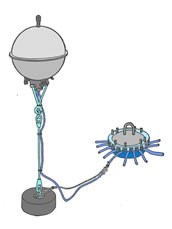
TORPEDO DEFENSES The Potomac defenses used buoyant mines that float in position and are held in place by a 1,000-pound anchor. They were fired electrically from the Mining Casemate located on the north end of the reservation. Since the mines were in a fixed location their function was purely defensive. They were also susceptible to enemy raids so rapid-fire shore batteries were needed to prevent tampering and to guard against fast moving torpedo boats. The rapid-fire guns at Batteries White, Many and Smith at Fort Washington, and Battery Sater at Fort Hunt, were assigned to the Mine Commander. After the planting crew placed the mines in the river they return to the post to man the batteries and protect the minefield. 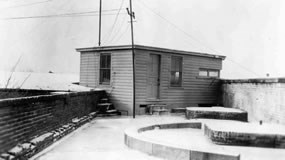
COMMAND AND CONTROL The mine system cannot be effective without command and control. The Mine Commander was located in the primary Fire Control Station containing range finders, plotting boards and telephones connected to other defense elements. As the mines were planted the distance and azimuth from two control stations was used to indicate the location of each mine on the plotting board. When under attack, enemy vessels are tracked and word sent to the Mining Casemate when the ship approaches a mine. One of the control stations was located on the ramparts of the fort's southwest demibastion and the secondary station was located at Fort Hunt. 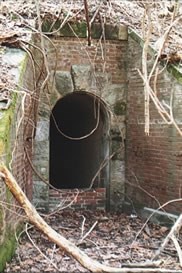
MINING CASEMATE The Mining Casemate was protected from enemy attack by 15 feet of earth and contains the switchboard used to fire the mines. When directed, the mines can be exploded individually or in groups. Fort Washington's first Mining Casemate was in a ravine about 700 yards north of the old fort. Work began in 1890 and the structure was completed by 1892. In 1906 a new casemate was built in the courtyard of the fort's southwest demibastion and the south casemates filled to protect the structure from enemy gunfire. 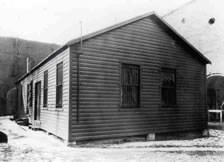
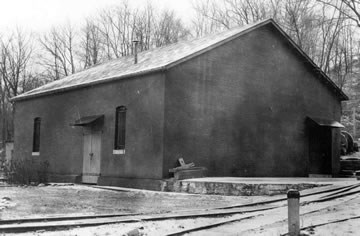
STORAGE AREAS There were also areas for storing mines and related equipment during peace times. In 1895 the torpedo material was received and temporarily stored in the quarters at the north end of the old fort. Later the material was moved to the nearby casemates and a Torpedo Storehouse built near the Engineer Wharf in 1897. Next to it, a Cable Tank held 28 four-foot diameter spools of lead-sheathed cable to connect the mines to the casemate firing switchboard. There is also a Loading Room where mines are filled, attached to their mooring cables and connected to the electrical cable. When assembled, the mines are loaded onto the Mine Planter, a boat rigged to hoist the mines, with their anchor and attached cables and placed in the river. SEARCH LIGHTS Although not for the exclusive use of the Mine Commander, searchlights were assigned to the Mine Command. Both Fort Washington and Fort Hunt received 30-inch searchlights during the emergency of 1898 and a 60-inch light in 1904. Fort Washington's 30 inch light was placed on the old fort wall. Later a frame building was built on the lower level of the demibastion to house the engine and generator. 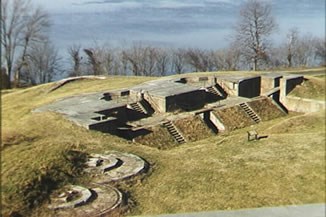
SPANISH AMERICAN WAR When the battleship Maine exploded in Havana Harbor in 1898 the engineers were in the process of extending the Mining Casemate. The earth was quickly replaced over the structure and preparations made to lay the minefield. Most of the equipment and material for the minefield was on hand but there was no gun cotton to fill the mines or electrical connectors. Dynamite was substituted for gun cotton to fill the mines and 4.5 tons was purchased from Wilmington, Delaware. The electrical connectors were purchased from local hardware stores as far away as New York. The first group of mines was filled and laid between April 23 and 30. When additional connectors were received a second group was laid upstream. The third group was placed downstream, extending to Bryant's Point and set to fire automatically when struck by a ship. The Spanish fleet never visited Washington but five mines accidentally exploded during a thunderstorm in June. In July the U.S. Navy destroyed the Spanish fleet and there was no threat to our shores. By July 27th the mines were removed. From April 23 to July 27, 1898 was the only time that live mines were placed in the Potomac River. Most of the dynamite was later used in modifying the concrete gun batteries for electric ammunition hoist. 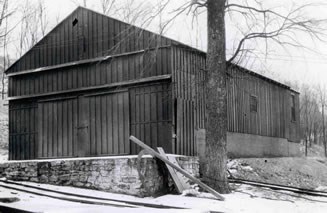
END OF POTOMAC MINE DEFENSE By World War I the defenses at the mouth of the Chesapeake were complete and it was unlikely that any enemy ship could pass Fort Story, Fort Monroe and Fort Wool. The Potomac Coast Defense was downgraded to harbor defense. The large guns and mine system was removed leaving only the rapid-fire guns. After the war the switchboard and other electrical systems were removed to build a post telephone system. After Fort Washington became a park other buildings were removed to make way for picnic tables and recreation areas. You can still find some evidence of the mine defenses in the park. In the old fort, you can see the south casemates that were filled to protect the Mining Casemate. The stone base of the position finder supports an information sign at the corner of the ramparts where the primary control station once stood. All the concrete emplacements for the rapid-fire guns remain and the Torpedo Storehouse still stands near the shoreline. On the north end of the reservation, near the water's edge, the outlet for a cable gallery and cable anchor post can be found. And although overgrown and deteriorating rapidly, the first underground Mining Casemate is still intact. 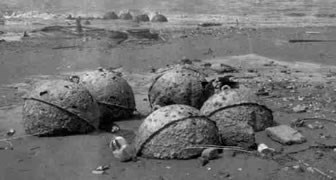
|
Last updated: April 10, 2015
